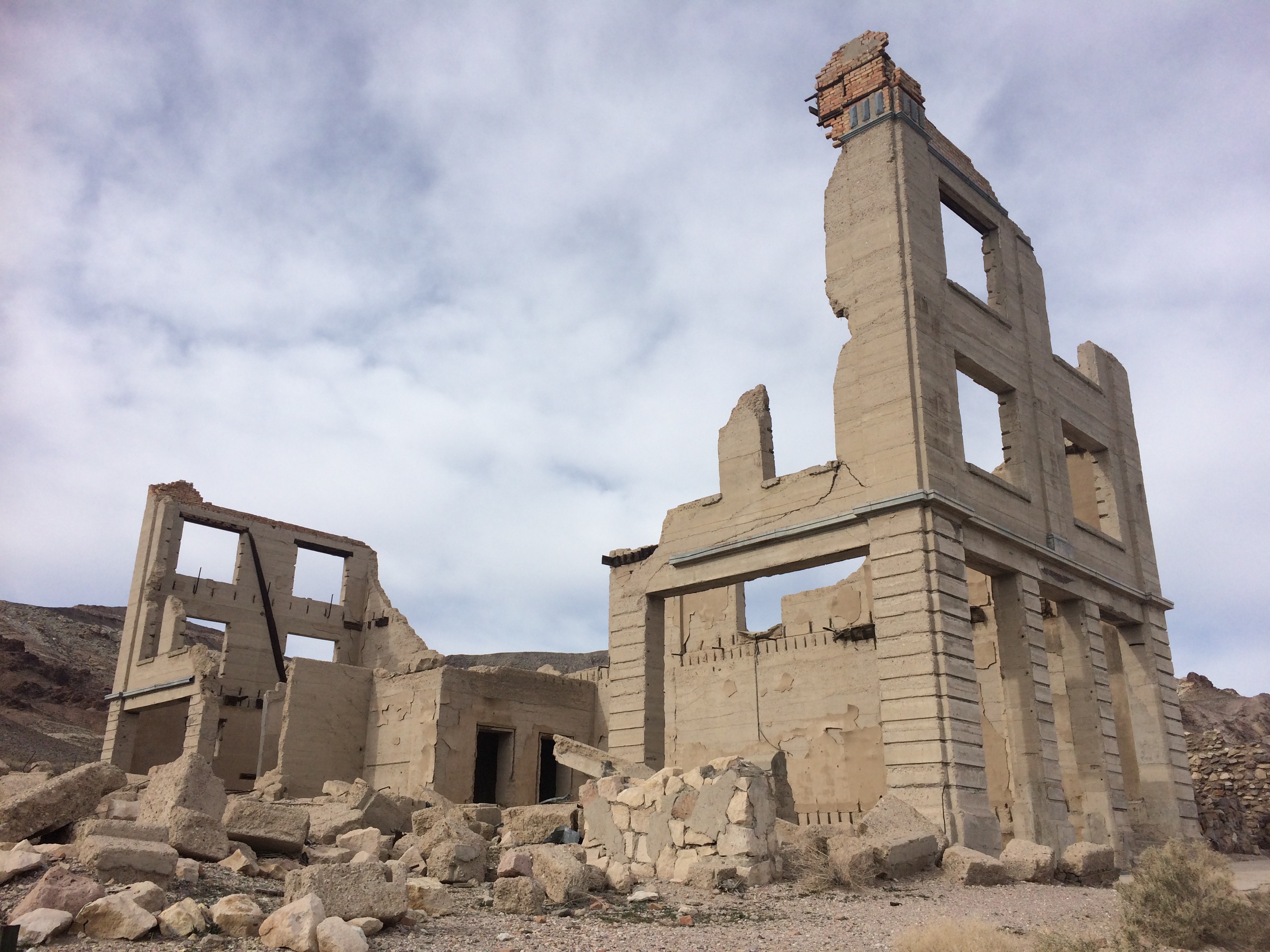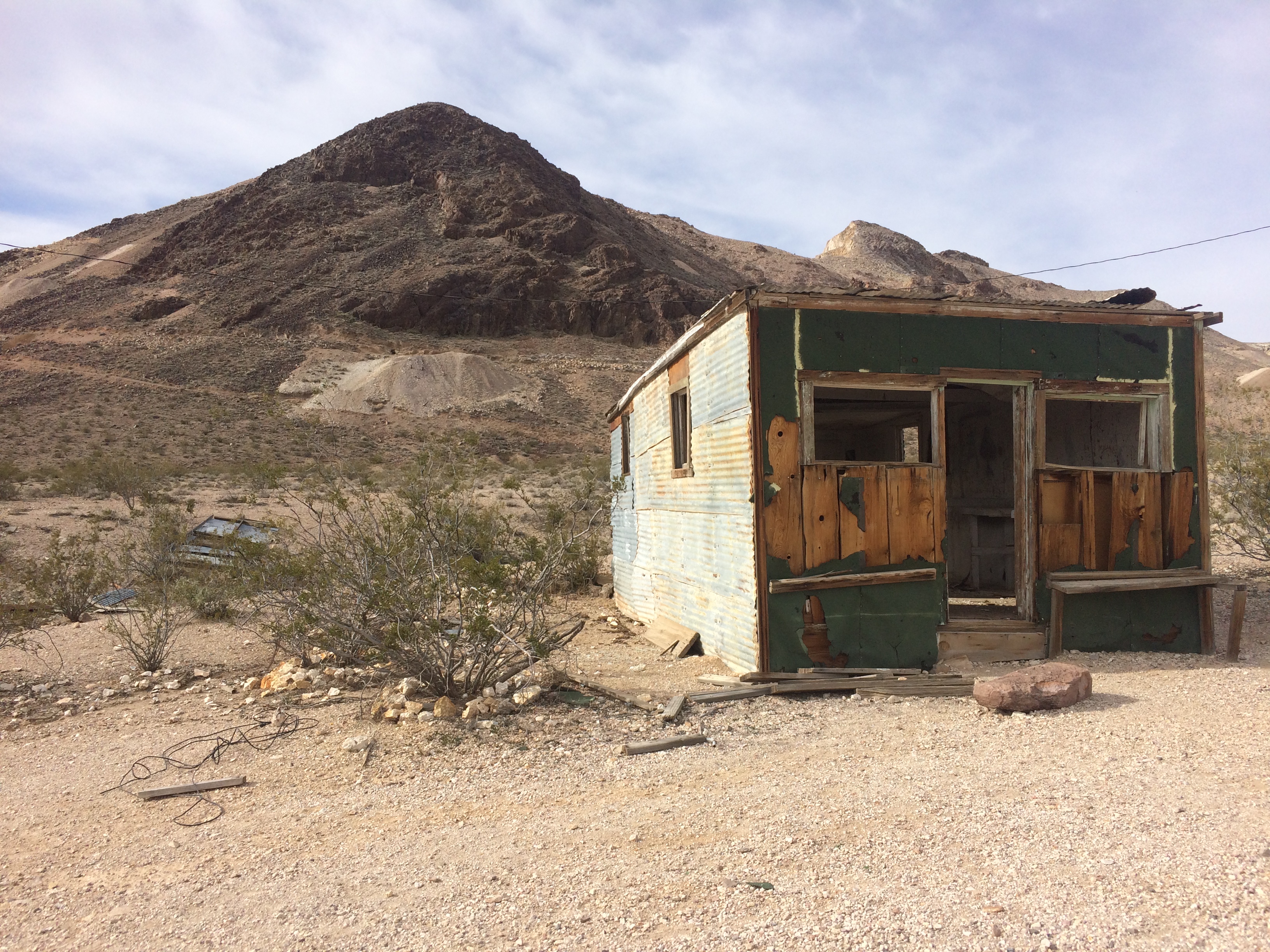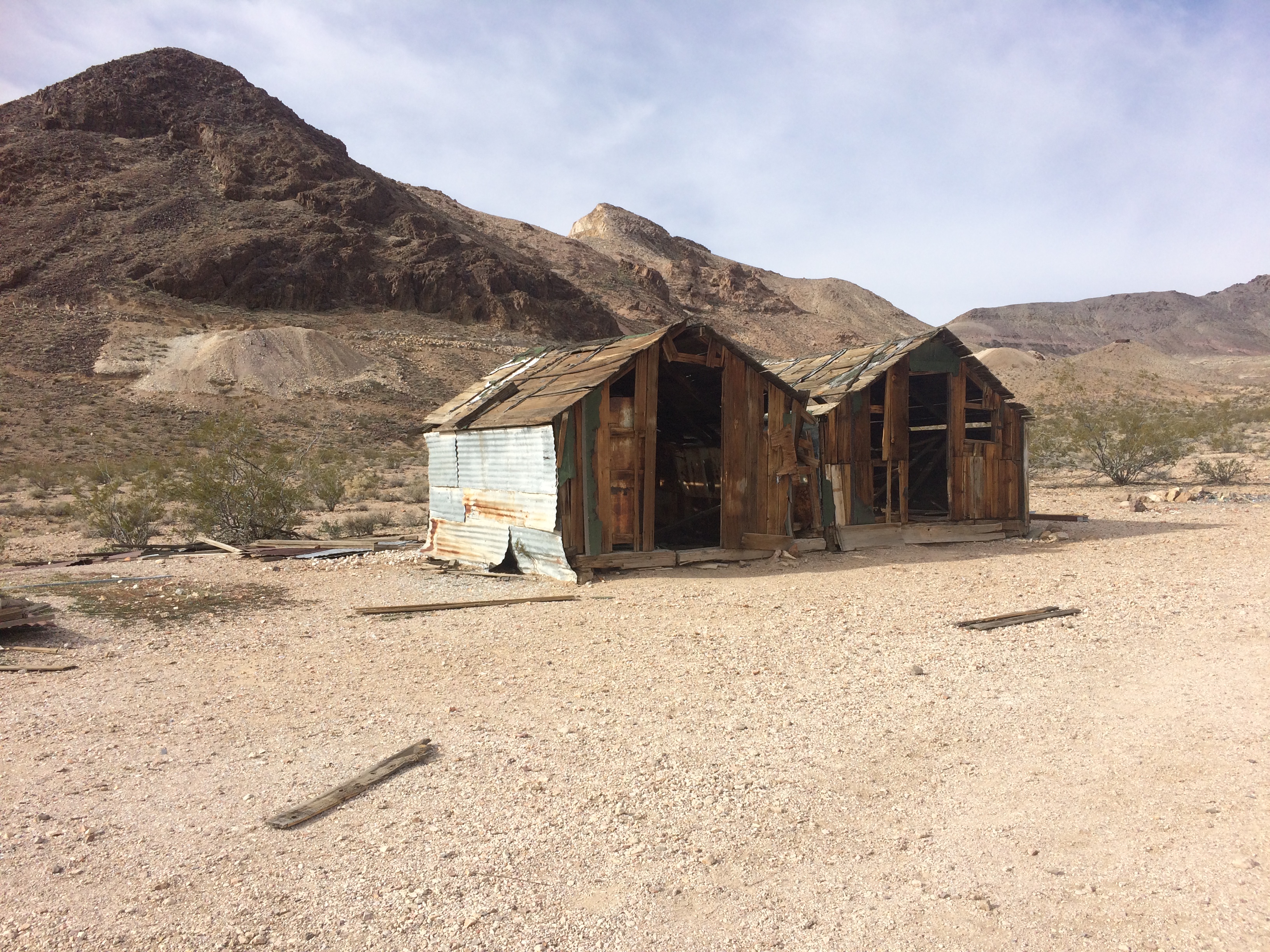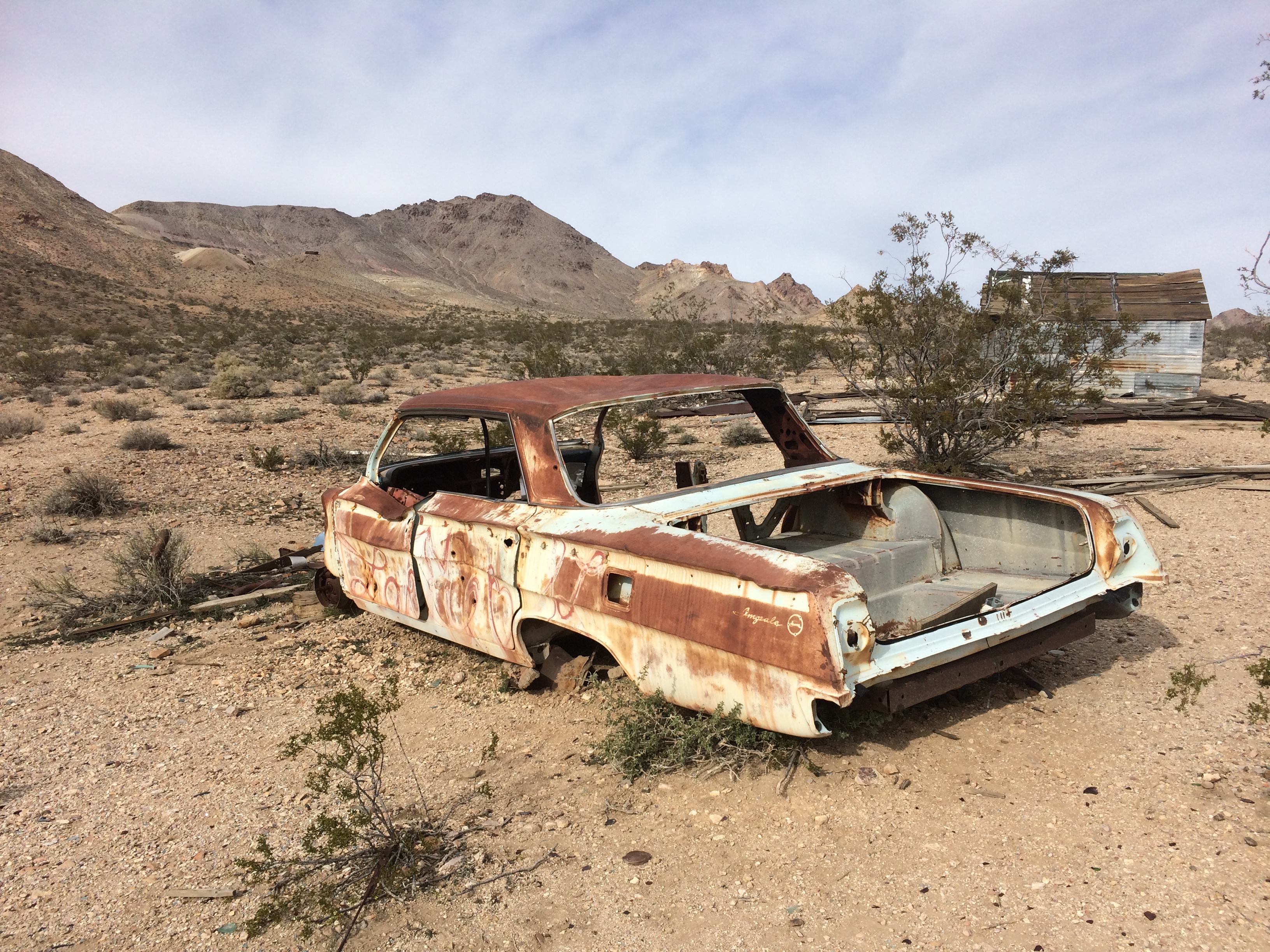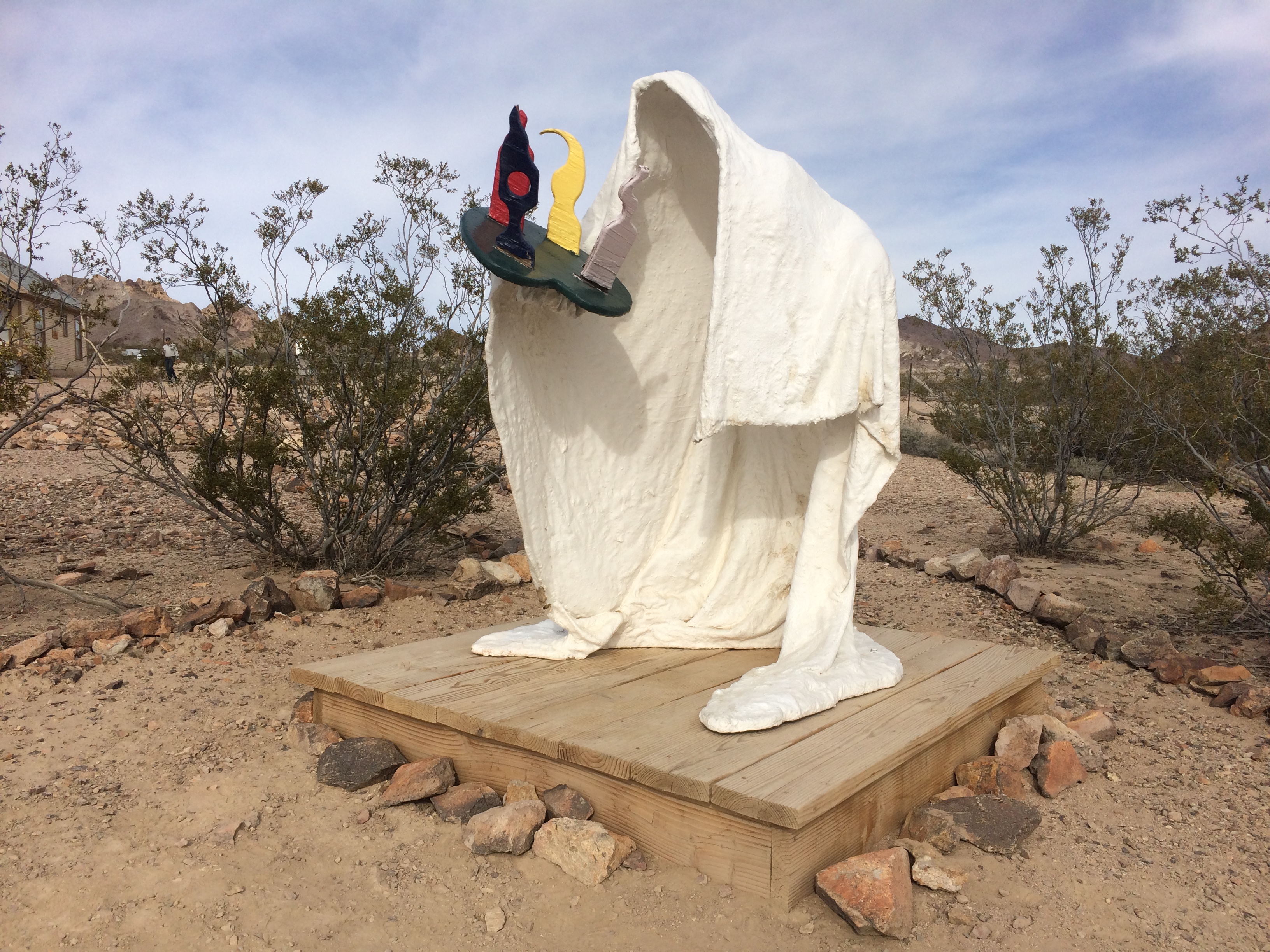Hundreds if not thousands of ghost towns lay in dishevelment throughout the U.S., and Death Valley National Park is home to a number of forgotten ghost towns that were once mining towns. Just outside this California park across the border into Nevada are the remains of Rhyolite, now a ghost town but once a prosperous mining town that housed 8,000 people at its peak. I’ve passed by several ghost towns before, but not one of this scale. Plenty of dilapidated buildings lined the “downtown” of Rhyolite, begging to be photographed. I later learned that Rhyolite is one of the most photographed ghost towns in the West and is the backdrop for a number of films.
Here is a brief history of Rhyolite. In 1905 several mining camps sprouted nearby and the California gold rush boomed, bringing a surge of miners to the area. In 1906 an industrialist invested heavily in infrastructure and by 1907, there were power lines, water mains, a railroad, newspapers, a bank, a hospital, schools, an opera house, a stock exchange, and even a brothel. However the richest ore was quickly exhausted, and with the financial panic of 1907 the town quickly declined. By 1910 the mine was functioning at a loss, and by 1911 the mine was closed. Miners without work moved elsewhere, the population drastically declined, and by 1920 the population dwindled down to 14. Rhyolite busted as quickly as it boomed.
Now Rhyolite remains as a tourist attraction.
Perhaps the most in-tact building is the old railroad station, later turned bar and casino, then later turned museum, and now just a well-preserved but abandoned building.
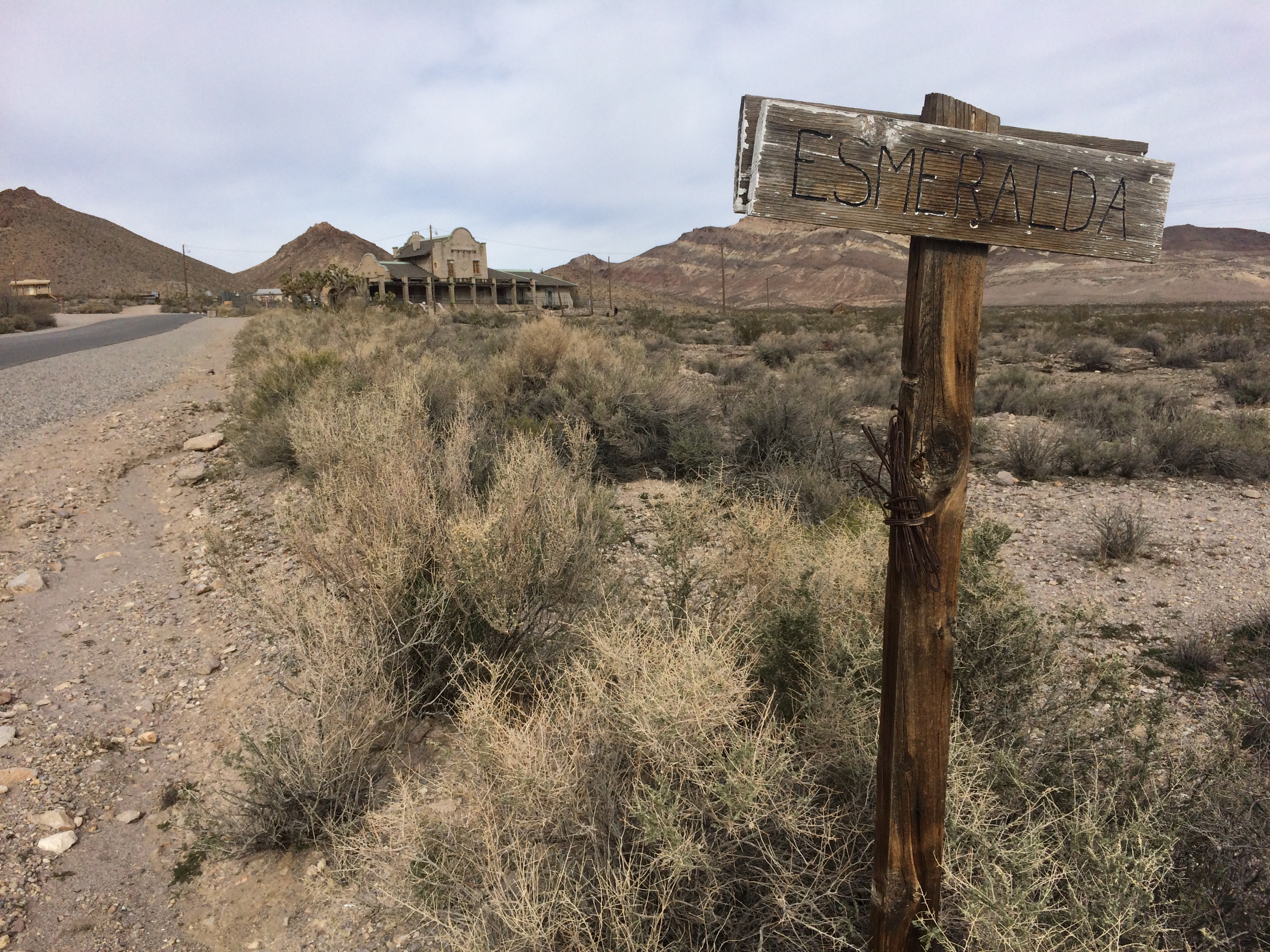
An old service station made of a caboose: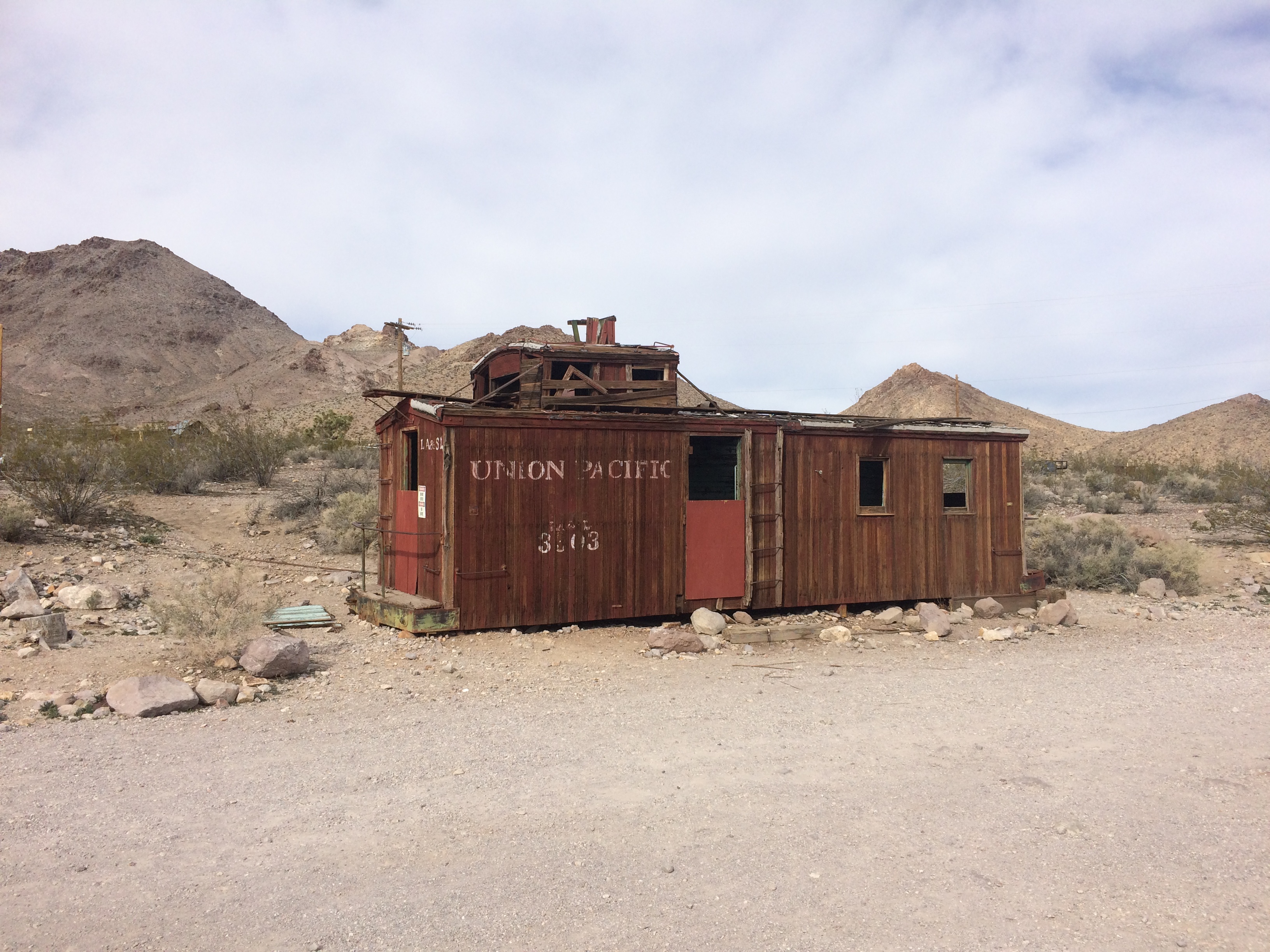

More ruins along the main street:
Quite a ways from the main street was this very in-tact building. Curiosity forced me to walk over and upon my approach I discovered it was a brothel!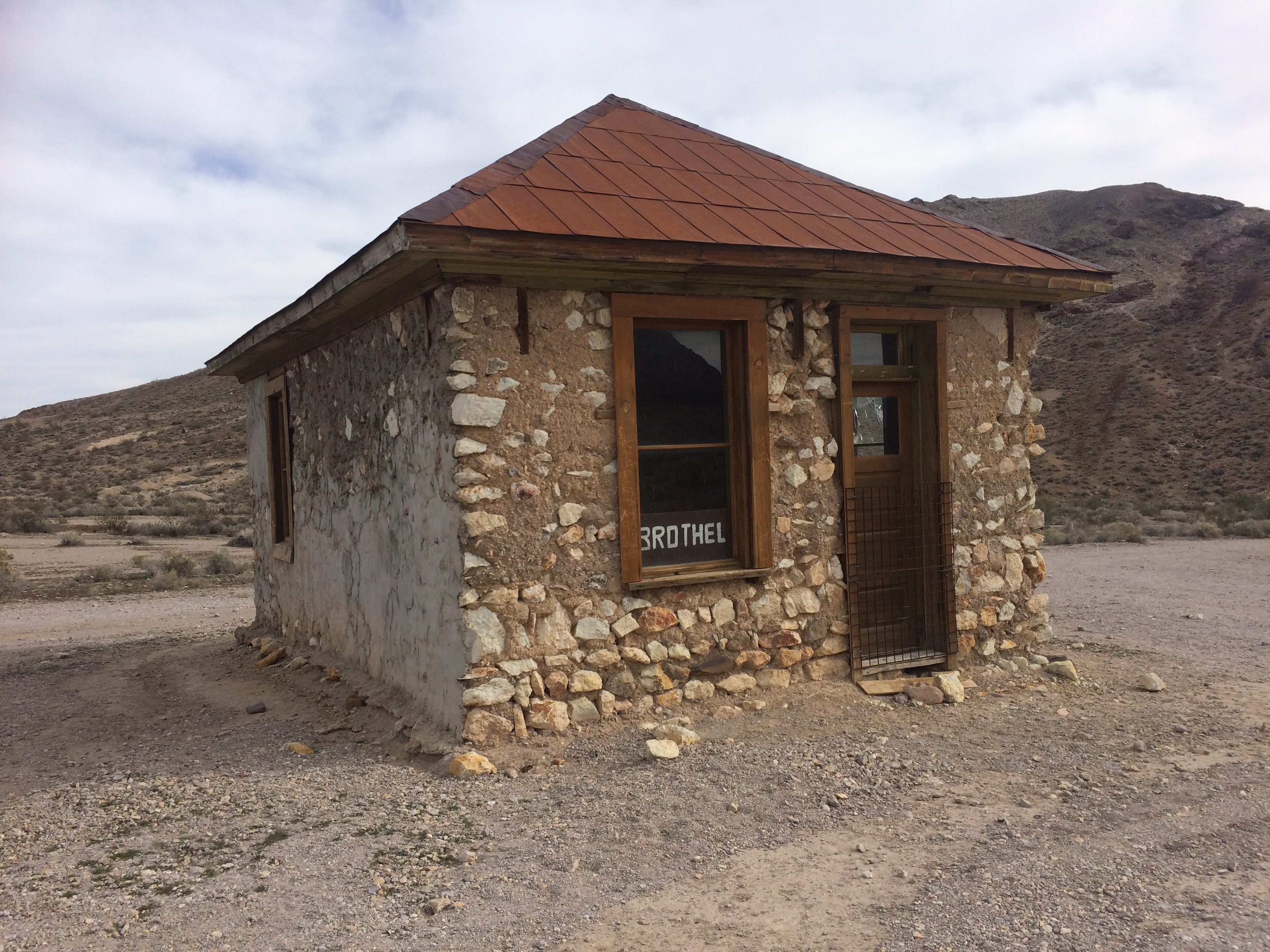
What makes Rhyolite even more appealing to visit and photograph is the addition of the Goldwell Open Air Museum, a free outdoor museum a stone’s throw away from the ghost town. It began when Belgian artist Albert Szukalski created his own ghostly version of The Last Supper in 1984 amidst the backdrop of desert valley.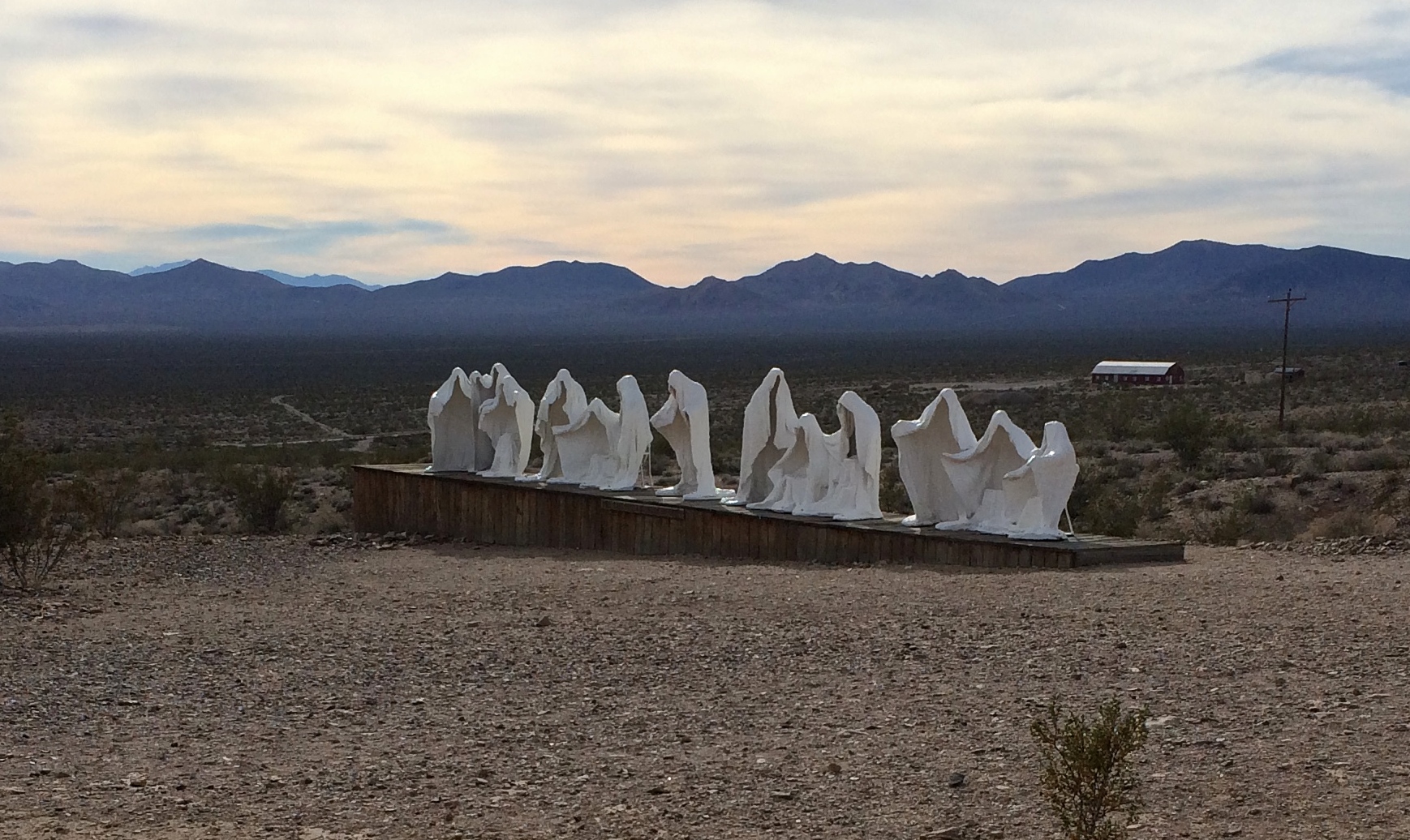
The artist created this sculpture by posing humans and draping plaster-soaked fabric over them. Once the plaster dried enough to maintain its shape on its own, the people would carefully exit the mold. From there the artist refined the details and applied fiberglass to the exterior in order for the sculpture to withstand the harsh elements of desert climate…kind of like Burning Man! He made a couple more sculptures in the same way. In 2000 he passed, and the Goldwell Open Air Museum was formed in his memory to house his pieces in addition to other artists’ sculptures.
For the piece Ghost Rider, the artist used a local man for the pose:
Lady Desert: The Venus of Nevada, a sculpture created by a different Belgian artist, portrays the goddess Venus in a highly technological/pixelated world of the 21st century: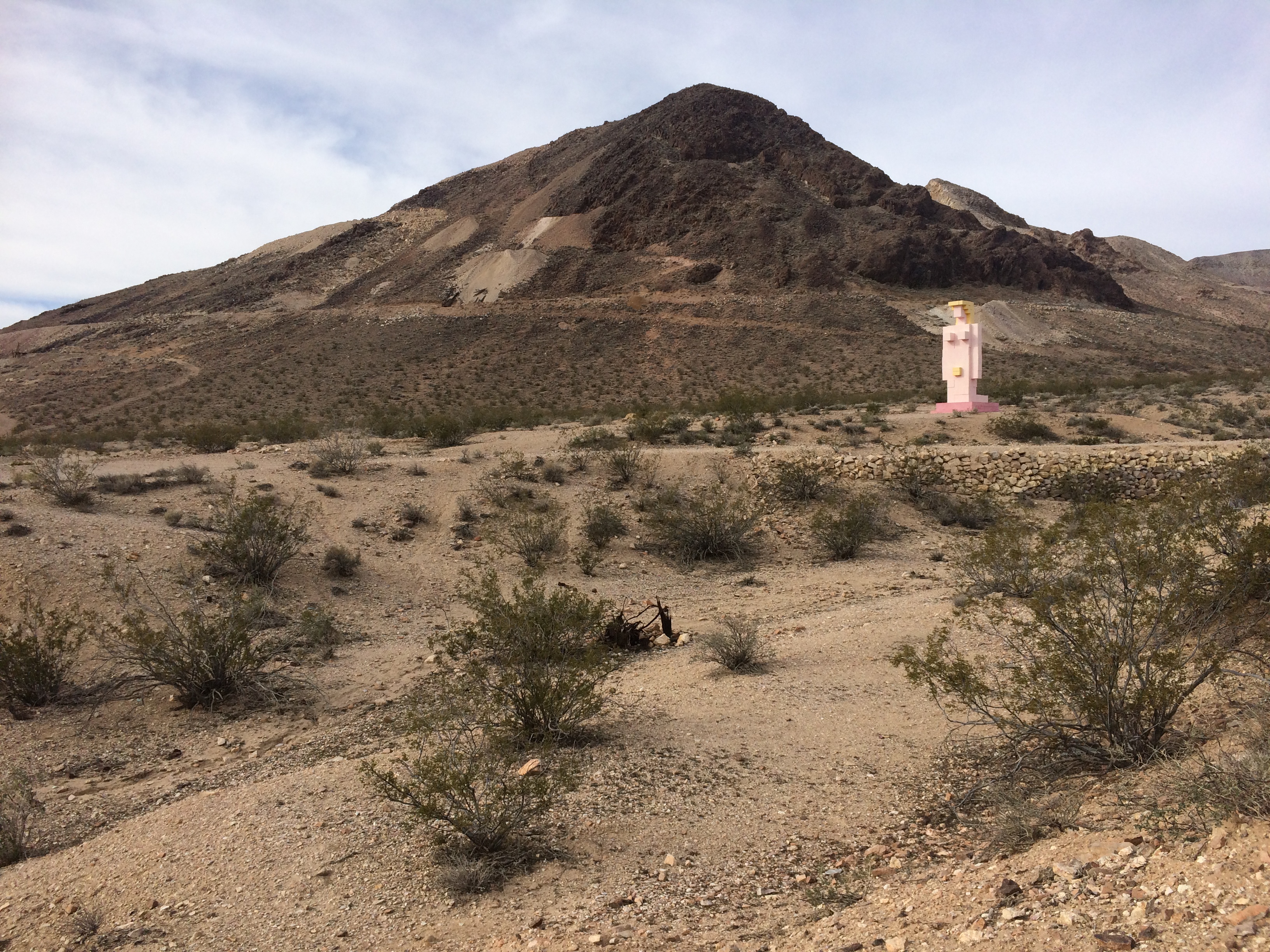
A number of other permanent pieces were displayed within the open air museum, but the first and original sculpture that led to the creation of the museum is still my favorite.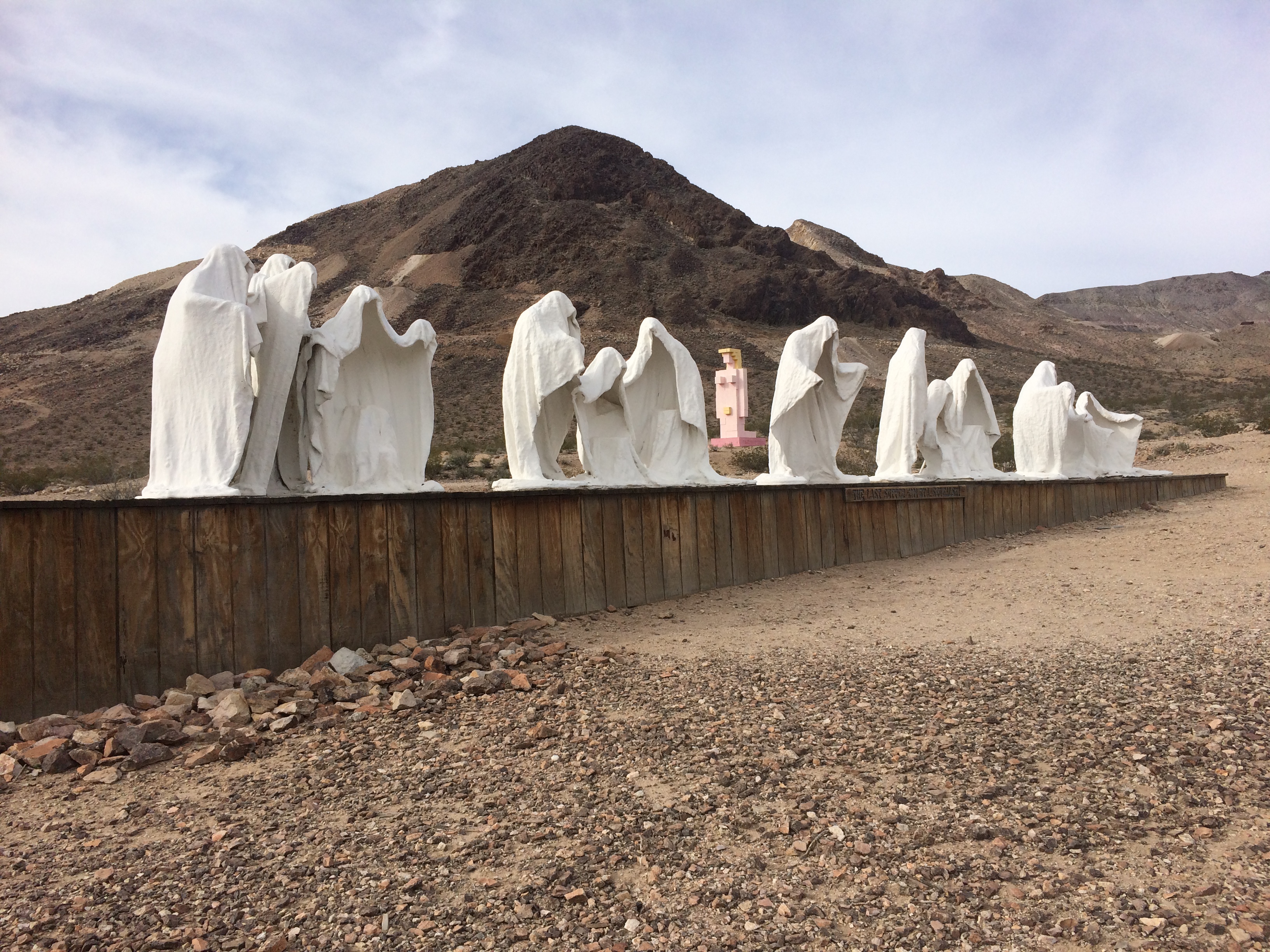
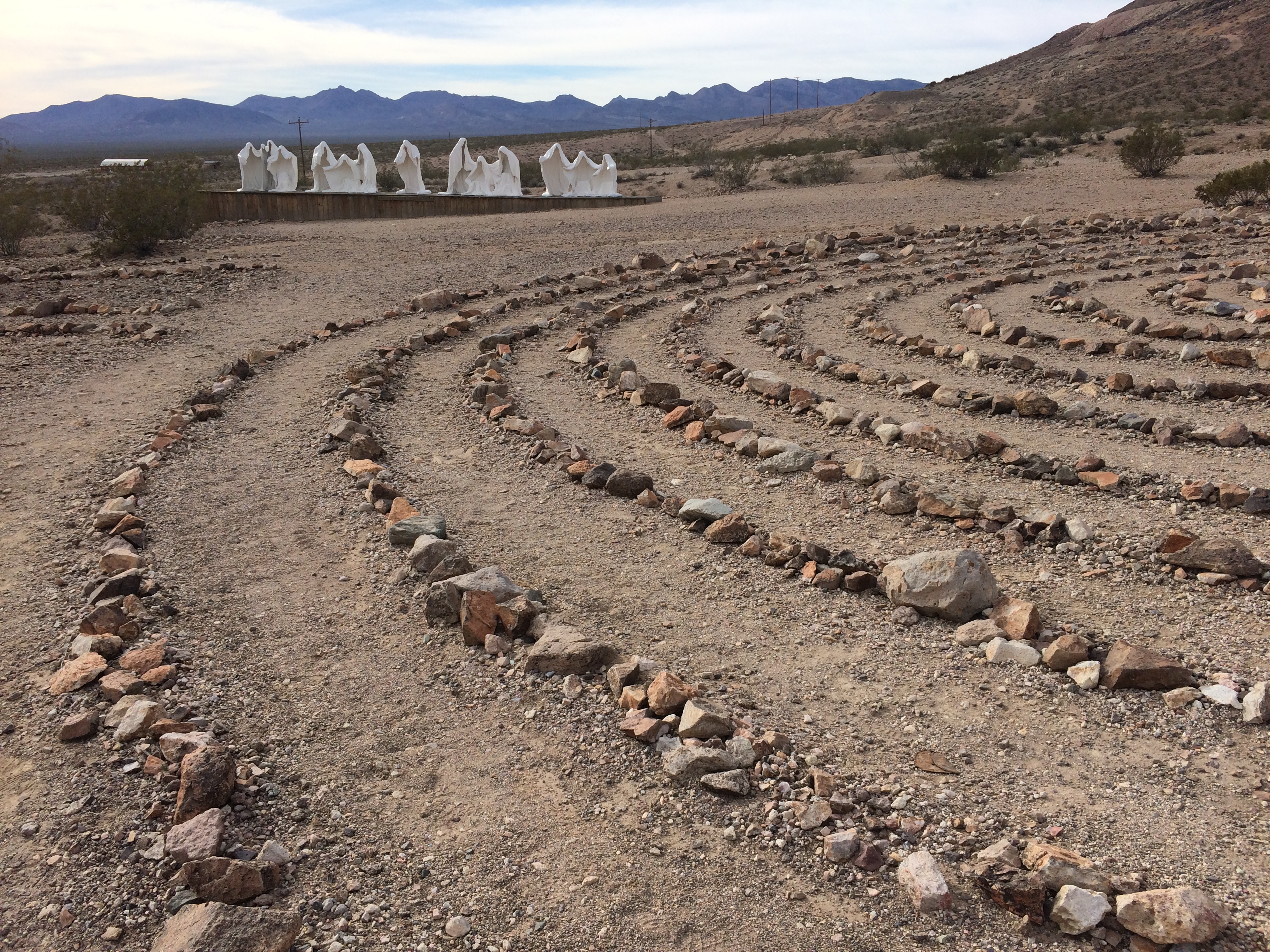
Within the museum was also a small visitor center/gift shop, but like Rhyolite, it seemed to be permanently closed and abandoned. Luckily the open air museum is open 24 hours a day, 7 days per week for the public to enjoy.
From afar the ghostly figures seemed a bit campy due to its vicinity to the ghost town of Rhyolite; I thought the sculptures were simply a play on the town. I didn’t think I’d spend as much time as I did at Rhyolite. I had no idea just how big it was! If I hadn’t taken the detour to Rhyolite, I never would have discovered the museum. If you’re visiting Death Valley, a trip to Rhyolite and the museum is definitely worth checking out.

